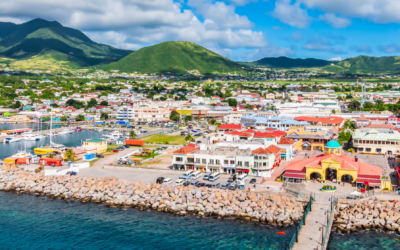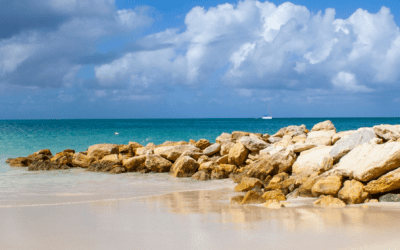This article discusses how to use the belt and suspender strategy when it comes to second passports and residencies.
One of the biggest concerns that second citizenship seekers have involves the lower quality of the passport they are obtaining through either naturalization or investment.
We’ve spoken extensively about the value of the “second-tier” passport. A Tier-B passport can mean access to some not-so-accessible countries. It can also add immense value to your investment or corporate portfolio.
From billionaires and celebrities to everyday entrepreneurs, we’ve helped over 1,500 successful clients create their Plans, grow their wealth, and increase their peace of mind. We can help you do the same.All you need to do is reach out to us, and we’ll handle the rest.
The “Belt and Suspenders” Strategy

If you aren’t familiar with the term, belt, and suspenders is an old term for a built-in redundancy. Both a belt and suspenders will hold your pants up, making the use of both together unnecessary. You either wear a belt like most of us, or rock it Larry King style, but not both.
In the arena of second citizenship by investment, a Belt and Suspenders strategy involves getting a lower-quality second passport and a higher-quality second residency that may or may not lead to citizenship in the future.
By combining a decent passport and a better residency, usually in an area like the European Union that allows a wide freedom of movement, you get the freedom of visa-free travel you want with the benefits that come from a more immediate passport.
Applying The Belt and Suspenders Strategy
If hanging out on the beach is your thing, being a citizen of a country that’s largely coastal is a great thing. If you’re a US citizen seeking to lower your taxes, you might be content to renounce your US citizenship for some white sands.
And under the Belt and Suspenders method, you might be able to obtain residency in the European Union – or anywhere else you’d like to spend time – and improve your visa-free travel options immediately.
By attaching a high-quality EU residency to a low-quality passport, you’ll increase the number of countries you can visit by up to 50%.
The Belt and Suspenders approach also separates the two most common reasons for wanting a second passport. It grants you personal freedom (i.e., lower taxes) and better travel freedom.
Instead of staying in a high-tax country and paying millions in taxes, you could invest in a Tier B or Tier C passport that offers personal freedom, then invest another amount in residency.
Reducing Your Costs
There are numerous Tier B and C passports with similarly low prices that can be paired with European residency.
For example, an Armenian passport could be paired with residency in Greece or Latvia, which requires a 250,000 real estate investment and a small government fee to obtain residency. However, European citizenship wouldn’t really matter under Belt and Suspenders plan.
The Belt and Suspenders approach makes sense, not only because Tier B and Tier C passports are less expensive and easier to obtain, but also because it dramatically lowers the hard costs you never get back. While Greece or Latvia requires investing 250,000 euros, you’d theoretically be able to get that back if you sell the real estate. Unlike expensive citizenship, where you never see the money again, your real estate should hold its value. You’re tying your money up but not sending it away to die.
Increasing Your Freedom
The Belt and Suspenders method makes passports that may have previously appeared inadequate become more valuable. Holding an EU residence permit also opens up several countries in Eastern Europe and Central America – even if your passport doesn’t allow you visa-free access to these countries, your EU residence permit will.
Of course, the EU isn’t the only place to get residency as part of a Belt and Suspenders plan, but access to the 28 countries of the Schengen Area makes it the most attractive. Countries from Colombia to Malaysia to Hong Kong allow the average investor or entrepreneur to obtain residence relatively easily.
The best part is that obtaining residence in many of these countries doesn’t automatically sign you up for tax obligations. If you don’t live in Latvia, for instance, you don’t pay tax there. You can easily use Latvian residency to travel throughout Europe with no home base, no obligation to pay tax anywhere.
The next time you think you can’t get a second passport quickly or easily, remember the Belt and Suspenders approach. The key is pairing residency with citizenship.
Visa-Free Travel with a Tier B Passport
If you’re Russian or Chinese or someone who has very bad visa-free travel, then maybe it’s worth it for you to pursue economic citizenship in Malta. By doing so, you’ll give yourself a whole host of new travel options.
If you’re a Westerner, though, you’re probably better off looking at the Caribbean. It’s more interesting and cost-effective.
St. Kitts and Nevis
St. Kitts and Nevis was the first country to offer citizenship by investment. A St. Kitts passport gets you into 143 visa-free and visa-on-arrival countries. This makes it the 49th-best passport in the world. The economic citizenship donation route will cost you $150,000.
You will have full access to the Caribbean as a CARICOM member. You will also be able to travel to ALL of Central and South America, minus Mexico, Paraguay, and Uruguay.
You’ll also have access to the Schengen Area, the UK, Ireland, parts of Africa and Southeast Asia, Hong Kong, and Singapore. You’ll also be able to travel visa-free to South Korea and parts of the Middle East, including Iran, Jordan, Egypt, and Israel.
Antigua and Barbuda
Antigua started its citizenship by investment program in 2012. Citizens of Antigua and Barbuda enjoy visa-free or visa-on-arrival access to 142 countries and territories.
Antigua and Barbuda’s major privileged offering that no other Caribbean country on this list can offer is visa-free access to Canada.
Antigua’s program starts out at $130,000.
Antigua and Barbuda provides access to all of the Caribbean (it’s also a CARICOM country). It also provides access to Central and South America, minus Argentina, Uruguay, Paraguay, and Mexico. An Antiguan passport will also get you into Australia and the majority of Southeast Asia (minus Thailand). It will also get you into Nepal, parts of Africa (including South Africa), Hong Kong, Singapore, and South Korea.
You’ll also have access to all of Europe (including Ireland and the UK), the Middle Eastern countries of Egypt, Iran, Jordan, and Lebanon.
St. Lucia
With fewer options than Antigua and St. Kitts, St. Lucia grants visa-free and visa-on-arrival access to 136 countries. In 2015, Saint Lucia gained visa-free access to the Schengen Area, making the passport a more attractive option.
As a CARICOM country, you will have freedom of movement throughout the Caribbean. Additionally, the Saint Lucian passport gives you access to all of Central and South America, minus Brazil, Uruguay, Paraguay, and Mexico.
You will have access to limited areas of Africa and Southeast Asia. You will also have visa-free travel to Hong Kong, Singapore, South Korea, Egypt, Israel, Jordan, and Iran.
In exchange for a donation of $100,000 to the government, citizenship by investment and/or businesses can be obtained. You can also obtain citizenship through other combinations of donations that you can find here.
Grenada
Grenadan citizens enjoy visa-free travel access to 135 countries. You can obtain citizenship through investment with a one-time donation of $150,000 to the National Transformation Fund. And in just over 12 months, you will receive your citizenship.
Grenada is another CARICOM country, meaning you will have full access to other countries in the Caribbean community. You will also have visa-free access to every country in South America except Paraguay. However, in Central America, you will only have access to Panama, Costa Rica, and Belize.
Grenada has access to Schengen’s area and, interestingly, is the only country on the list with visa-free access to China. You’ll also have access to parts of Southeast Asia and Africa, as well as Iran, Jordan, Israel, and Egypt. Last but not least, you can travel to Hong Kong, Singapore, and South Korea on a Grenadine passport. As you can see, if Grenada is an affordable option for you, then there’s no need to dive into the belt and suspenders strategy.
Malta
If none of these Caribbean countries are offering what you’re looking for and you have the money, let’s take a look at what you’ll get with citizenship through investment from Malta.
Malta actually has the 12th-best passport in the world. Thanks to its visa-free or visa-on-arrival access to a total of 171 countries. A Maltese passport grants you visa-free travel to the entire western hemisphere (minus Cuba), including the US, Canada, and Mexico. If the US is a must for you to travel visa-free, then the Maltese passport might be worth it.
As an EU member, Malta also grants you freedom of movement throughout all of Europe. You’ll also have access to countries such as Australia, New Zealand, India, Pakistan, Bangladesh, Nepal, Japan, Hong Kong, Singapore, South Korea, and all of Southeast Asia (with a limited visa on arrival in Vietnam).
Finally, you’ll be able to travel visa-free to South Africa and other African countries, plus Iran, Iraq (limited visa on arrival), Egypt, Israel, Jordan, the UAE, and Kuwait.
Malta definitely offers greater visa-free travel than the Caribbean countries on this list, but is it worth the price tag+? It’s important to think of all aspects before you make the decision and it might be right for you.
Go Where You’re Treated Best
When it comes to acquiring second passports or residencies, you shouldn’t get the cheapest or most expensive. You should get one that helps you go where you’re treated best.
The best passport or residency for you is the one that works best with all aspects of your life – not just travel freedom.
Consider your taxes, business, and personal lifestyle before acquiring a second passport or residency.
From billionaires and celebrities to everyday entrepreneurs, we’ve helped over 1,500 successful clients create their Plans, grow their wealth, and increase their peace of mind. We can help you do the same. All you need to do is reach out to us.









